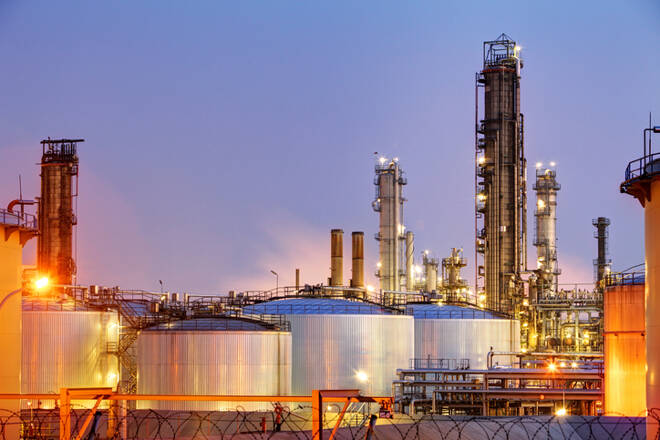Advertisement
Advertisement
Natural Gas Price Fundamental Daily Forecast – Forecasts Calling for Lower Demand Capping Gains
By:
With the coming of seasonally cooler weather, Refinitiv projected average U.S. gas demand, including exports, would slide from 94.3 bcfd to 92.1 bcfd.
Natural gas futures are trading higher at the mid-session on Tuesday as traders attempt to claw back some of yesterday’s 3% losses. Uncertainty over the near-term impact of the Hurricane Ida may be helping to underpin prices, while capping gains are predictions of lower short-term demand.
At 16:51 GMT, October natural gas futures are trading $4.363, up $0.058 or +1.35%.
On Monday, natural gas futures plunged from nearly three-year highs on projections for lower temperatures in the intermediate term, and as Hurricane Ida quickly weakened into a Tropical Storm after making landfall in Louisiana on Sunday.
Storm typically lead to temporary price spikes due to impacts to production in the Gulf of Mexico, but they lead to lower temperatures, “causing demand destruction as well. So the long-term effect depends on the relative magnitude of supply and demand changes,” said Zhen Zhu, economist at Oklahoma City-based C.H. Guernsey.
“As we head into the shoulder months, demand from power generation is coming down, putting lower pressure on prices … We may see some declines in prices after the storm passes, but that may be quite limited, especially when we’re just entering the active stage of the hurricane season,” Zhu added.
Short-Term Weather Outlook
According to NatGasWeather for August 31 to September 6, “Remnants of Ida will bring heavy rains across the East the next several days with highs of 70s to 80s. Weather systems will also impact the northern U.S. this week with showers and highs of 70s to 80s.
California to Texas and the Plains remain very warm to hot with highs of mid-80s to 100s. Much of the U.S. will briefly become very warm this weekend as high pressure strengthens with highs of 80s and 90s before stronger fall-like cool fronts arrive into the northern and eastern U.S. next week with showers and highs of 60s to lower 80s.
Overall, national demand will be moderate to low.”
Steady Production in August
Data provider Refinitiv said total U.S. production has averaged 91.8 bcfd so far in August, versus 91.6 bcfd in July. That compares with an all-time monthly high of 95.4 bcfd in November 2019.
With the coming of seasonally cooler weather, Refinitiv projected average U.S. gas demand, including exports, would slide from 94.3 bcfd last week to 92.1 bcfd this week, as power generators burn less of the fuel with air conditioning demand easing.
The amount of gas flowing to U.S. LNG export plants has slipped to an average of 10.5 bcfd so far in August from 10.8 bcfd in July.
Traders, however, noted LNG feedgas was already increasing as companies operating the Cameron and Sabine plants in Louisiana and the pipelines that serve them finish maintenance work. That compares with a record 11.5 bcfd in April.
With European and Asian gas both trading over $16 per mmBtu, compared with just over $4 for the U.S. fuel, analysts said buyers around the world would keep purchasing all the LNG the United States can produce.
Short-Term Outlook
Technically, the main trend is up but Monday’s reversal to the downside suggests the selling may be greater than the buying at current price levels.
Taking out $4.526 will signal a resumption of the uptrend, while a move through $3.751 will change the trend to down. The minor support is $4.202. The main support is $4.139.
For a look at all of today’s economic events, check out our economic calendar.
About the Author
James Hyerczykauthor
James Hyerczyk is a U.S. based seasoned technical analyst and educator with over 40 years of experience in market analysis and trading, specializing in chart patterns and price movement. He is the author of two books on technical analysis and has a background in both futures and stock markets.
Advertisement
